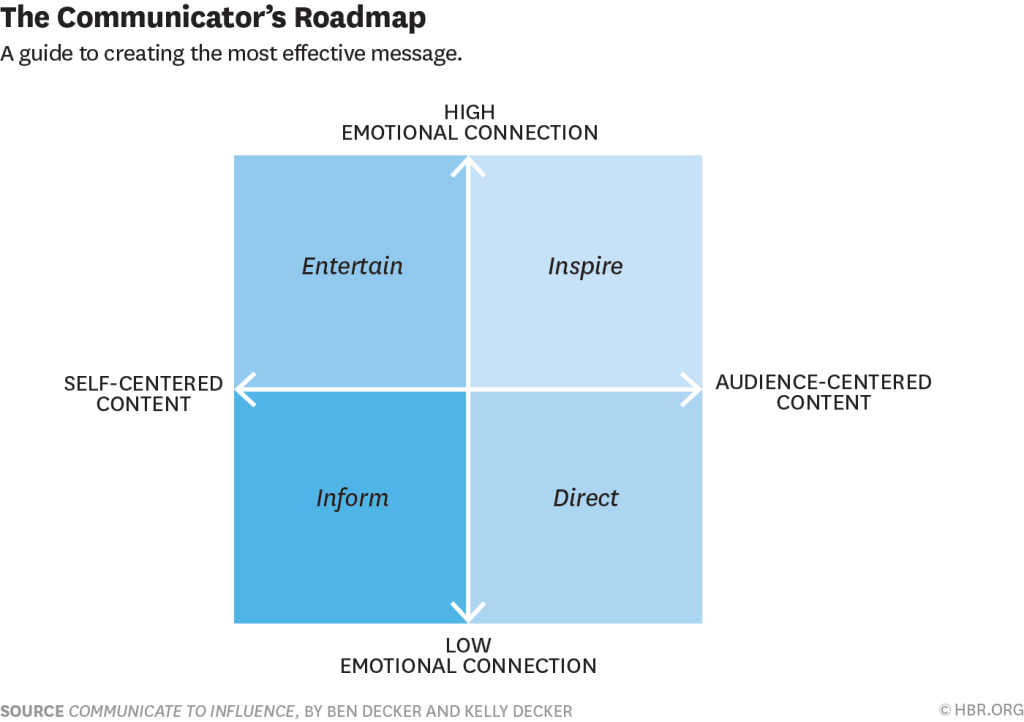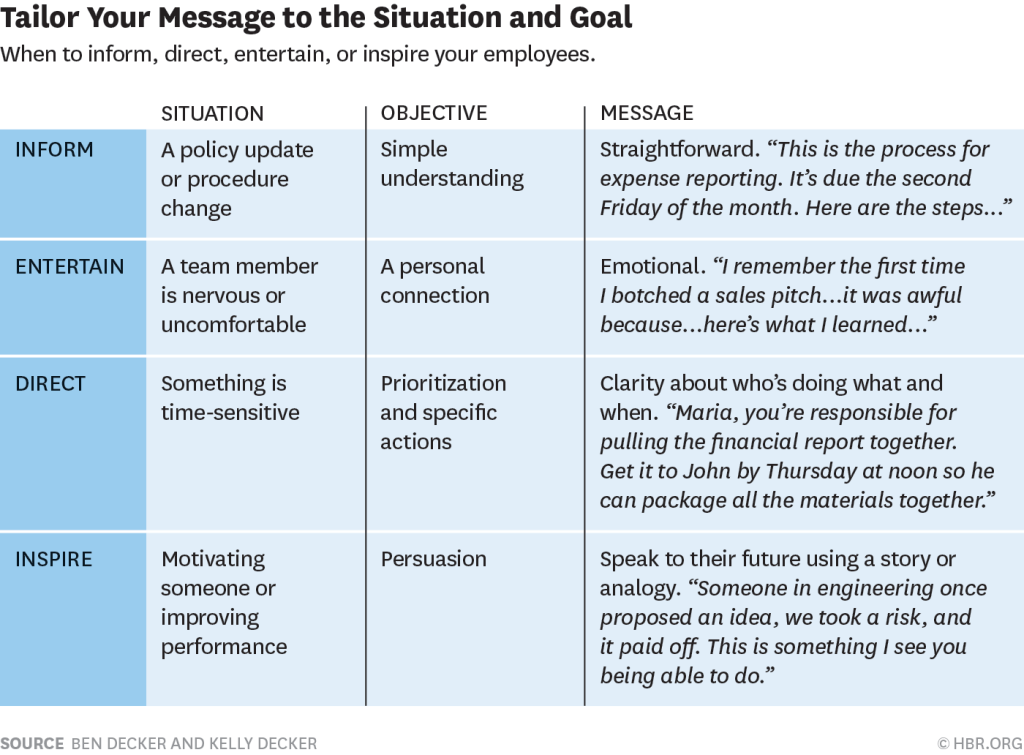May 20, 2015
How to Get Employees Excited to Do Their Work
Written by Kelly Decker and Ben Decker,
What keeps you up at night as a manager? Are you worried about hitting your numbers? How to boost the results of lower performers? What about how to keep top performers motivated?
We often believe that the most effective way to respond to these concerns is to directly tell our employees what to do. Directing a team is certainly one way to achieve your goals. But while it’s tried, it’s also tired. Several trends suggest that it’s no longer enough to lead by authority. There’s an ever-increasing trust gap between leaders and employees (we are twice as likely to trust someone “just like us” than we are a CEO), endless distractions make it harder to separate the signal from the noise, and more than 67% of employees aren’t engaged at work. All of this has left people thirsting for inspiration, which means managers have to rethink how they communicate with their teams.
No one wants another checklist task that they have to complete. We want to be called to something greater. So instead of informing and directing your direct reports, aspire to inspire. When you focus on persuading them, you’ll be able to turn even a corporate initiative or new product launch into a cause that becomes their own. They’ll want to step up and own their results.
The challenge is how to shift someone’s response from “I have to” to “I want to.” After pulling together the tips we’ve shared with thousands of leaders from Fortune 500 companies, nonprofits, and startups, we developed what we call the Communicator’s Roadmap.
The vertical axis measures emotional connection. This is your barometer of trust, and it’s comprised of the rapport you build with others, your likability, warmth, reliability, and empathy. You can strengthen this connection by showing warmth and care. Personal stories, especially those that reveal vulnerability, can also help others relate to you. As social psychologists explain, “Warmth is the conduit of influence: It facilitates trust and the communication and absorption of ideas.”
On the horizontal axis, we have content. A self-centered message, on the left side of the spectrum, is not necessarily selfish, but it’s all about you—your expertise, your wisdom, your opinions, and your agenda. The right side is all about how the message relates to the other person. These are not mere facts, figures, or frameworks; they are human-scale, concrete, and actionable. If your message is not relevant to someone, it won’t be persuasive.
Looking at the four quadrants, most of us default to Inform and Direct as a way to get things done. Sometimes that works – but it’s not a long-term solution for retaining top talent, growing your team, or raising the bar.
We worked with a client at a financial services company who had a direct report, let’s call him Bill, who was not well liked. Bill was a good performer, he was effective on a stage, he got paid well—but his colleagues didn’t like him. No matter how hard his manager tried to direct him, “Bill, you need to do a better job and connect with others,” he wouldn’t make any progress. Bill didn’t care if his colleagues liked him or not.
After many dead ends, Bill’s manager shifted her approach. She said to him, “I see a future for you here at our company, and I want what’s best for you.” Empathizing that Bill had such great potential, she made an emotional appeal to Bill’s long-term goal to join the management team. She continued, “Peer relationships at that level are critical to work through others – and it’s just not possible if you are not trusted and can’t connect well with your colleagues.”
This shift in message (toward Audience-Centered content), inspired by her confidence in him (through Emotional Connection), changed Bill’s perspective. Building relationships with his colleagues was no longer something he had to do; it was something he wanted to do as part of his own goals and objectives. There was a new personal level of accountability.
In another example, a client had grown substantially through a series of acquisitions over the span of three years. Every manager suddenly had a lot more on his or her plate, including keeping teams engaged, motivated, and performing, rather than feeling bitter about the changes.
The corporate communications team had already been churning out emails highlighting new expense procedures, sales process changes, escalation flows, etc., but this wouldn’t engage employees. When a message comes from above, it has to be adapted at every level; otherwise, it’s just a directive. What made the great managers stand out was their ability to tailor the new vision to each level of direct reports. When they shifted the message to be audience-centered—by explaining why each team should personally care about the changes—they were able to motivate a positive, self-propelling response from team members. They became part of the cause.
Inspiration is not something to be left for the annual company kickoff. There are opportunities every day: when you want to empower a team member to take ownership of a project, when you want your feedback about someone’s performance to stick, when you’re communicating change, etc. Being a leader who persuades others through inspiration starts with connection. Greater empathy and relevance leads to growth, increased motivation, faster action, and real results. Use the Communicator’s Roadmap before your next meeting with your direct report to create an experience that will shift his response from “Sure, I can do that…” to “Count me in!”
The article was originally published by HRB.com on May 18th, 2015.
Tags


